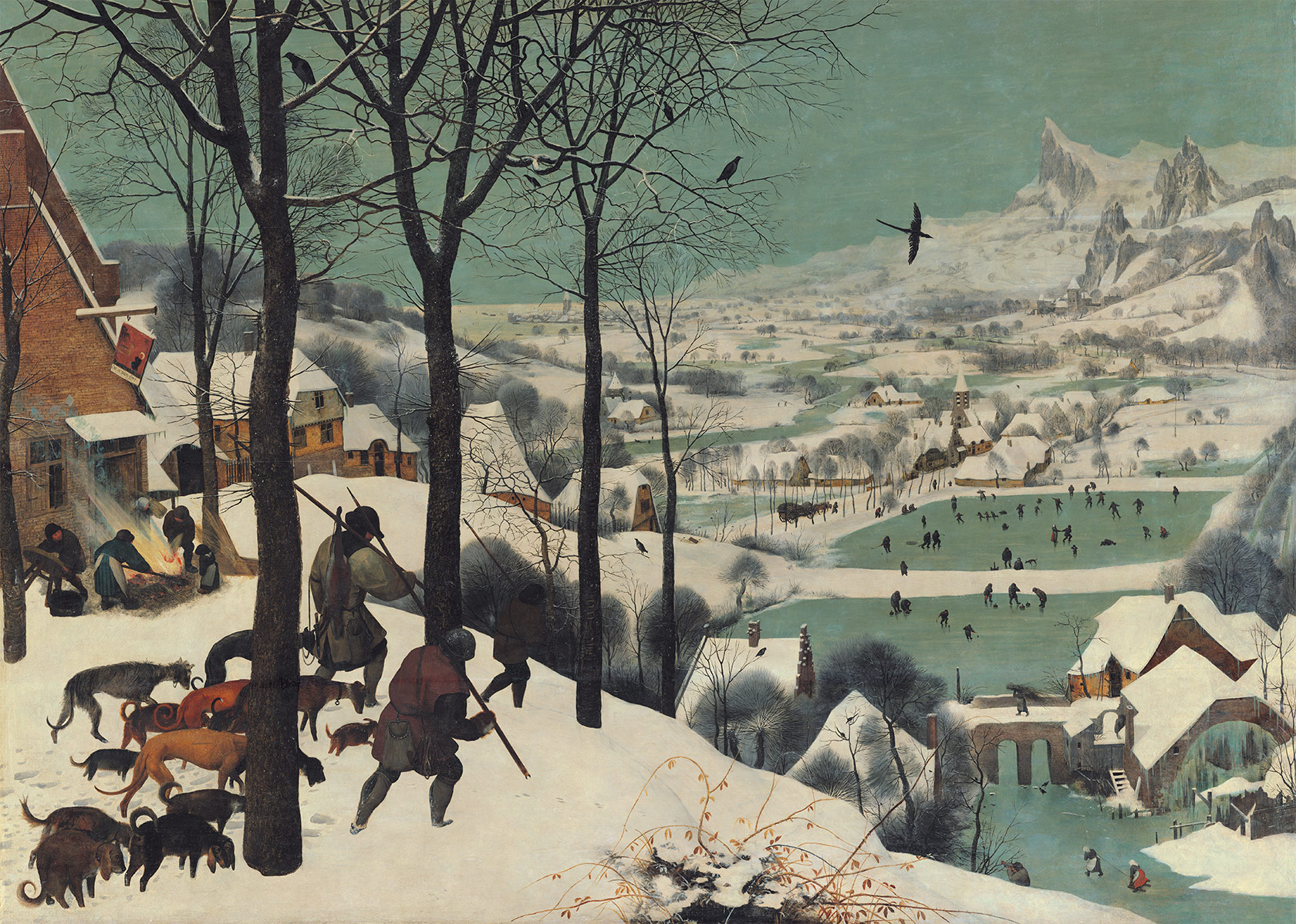Renaissance Art: The Hunters in the Snow
The following artwork is The Hunters in the Snow, a 1565 oil-on-wood painting, by Pieter Bruegel the Elder during the Northern Renaissance period. This Northern Renaissance artwork is only one of five extant works of this series, where each work originally depicted a different month of the year.

Influences and Style
Just like all the works of the Northern Renaissance, The Hunters in the Snow was also influenced by the Italian Renaissance's humanism; however, only to some extent as the Northern Renaissance's focus shifted away towards a different path. The Northern Renaissance's humanism was more focused on religion and Christianity, especially with the Reformation as a significant characteristic of this era. Furthermore, the Northern Renaissance gradually deviated from the Italian's classical antiquities, and began to focus heavily more on real observations, and accurately portraying the visuals of reality. When it comes to Bruegel's works, there are those that either depicts or doesn't depict any relation to the reformation occurring during the Northern Renaissance. Bruegel's works followed the influence of the North's approach to humanism, illustrating realistic scenes and structures, as well as focusing on the aspects of human life. Especially as most of his works tend to lean towards portraying the life scenes of peasants' life with details, often illustrating event occurrences throughout the seasons.
The Painting:
The Hunters in the Snow is a bird's eye view landscape illustration, depicting a realistic image of a scene during winter, and has such great detailing that it is possible to miss several subjects within the work. And although it does appear to capture a real-life moment, this specific landscape does not actually exist in northern Europe but rather is a combination of various images and characteristics of his surroundings.
The painting depicts several different scenes within one overall artwork. In the foreground, the largest figures we see is a group of exhausted hunters returning with their pack of dogs from a seemingly unsuccessful hunt. Back then, during the North Renaissance, hunting rights and special breed dogs were associated with aristocracy, meaning that we can assume that this group is wealthier in comparison to those in the middle ground. The rest of the painting consists of peasants, actively participating in various activities, such as ice skating, sitting beside a fire, and travelling on a carriage. It appears as if the people in the painting are forming a connection with the natural surrounding rather than controlling it, almost as if Bruegel was expressing his views of the society in which he lived.
Final Thoughts
I really enjoy this piece because of how much minute details the artist was able to incorporate into his work, capturing a realistic image of a life moment, and having the viewer appreciate the hidden figures in the distance of such a complex scene. If given the chance I would love to own a copy of The Hunters in the Snow. It was an artwork that one of my close friends introduced to me a few years ago, and while there is some nostalgia connected to the painting, I genuinely like Pieter Bruegel the Elder's artistic style.Works Cited:
Boffa, Dr. David, and Dr. David Boffa. “Pieter Bruegel the Elder, Hunters in the Snow (Winter).” Smarthistory, smarthistory.org/pieter-bruegel-the-elder-hunters-in-the-snow-winter/.
“The Hunters in the Snow.” Bruegel, www.bruegel2018.at/en/the-hunters-in-the-snow/.
Wisse, Jacob. “Pieter Bruegel the Elder (Ca. 1525–1569).” Metmuseum.org, www.metmuseum.org/toah/hd/brue/hd_brue.htm.
It was nice to focus on different areas of the painting and seeing something new and different. You can really spend soo much time admiring paintings like this and take in or find new things in the painting. Thank you for sharing.
ReplyDeleteI think that Pieter Bruegel the Elder's approach to humanism - focusing on the typical life of a peasant's - is incredible. I am glad to have learned that; thank you. I find the North's approach to humanism more agreeable with my personal views. It lends the art to a wider audience whereas they would only be seen within chapels already filled with splendor. I agree with your analysis in that the people in the painting are forming a connection with the natural surrounding rather than controlling it. You mention his other work, The Tower of Babel, and I can't help but think of how contrasting the works are. In this work, The Hunters in the Snow, the natural landscape takes over the work. The number of hunting dogs even outnumber the hunters! In The Tower of Babel, the work is dominated by the man-made, never-quite-complete structure that is the tower. Pieter Bruegel the Elder had a breadth of artistic ability to create two completely unalike works of art.
ReplyDeleteHi Luane,
ReplyDeleteI have never seen this painting before and it has quickly become one of my favorites that his class has introduced me to. The focus on capturing an everyday scene rather than an overtly religious one is an excellent example of humanisms impact on the artists of the Northern Renaissance. I also appreciate the details of peasant life during this time. In particular, I enjoy the images of the people skating. We tend to forget that the lives of the common people during this time was no all toil and suffering. They also took time to have fun and to revel in nature and the community, much like we do today. Thank you for your post and for introducing me to this painting.